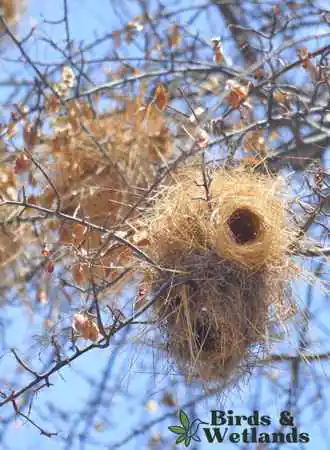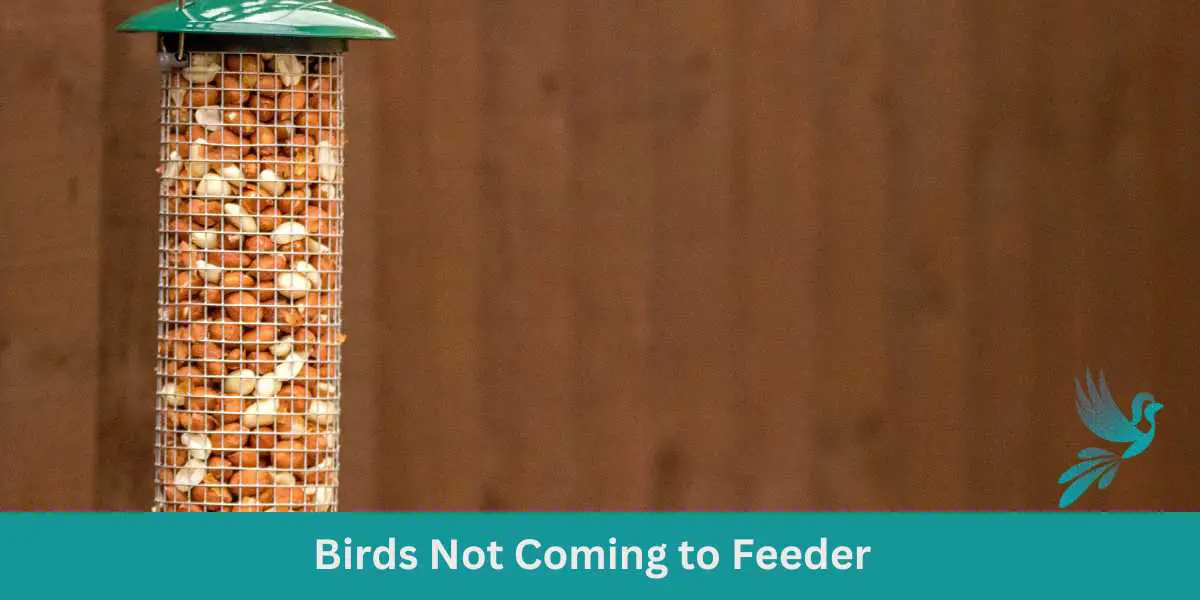As a bird lover, nothing is as delightful as seeing your feathered friends flock to your backyard feeder. However, if you’ve noticed a distinct lack of avian activity lately, you might be wondering — why aren’t any birds coming to my feeders?
While it’s true that birds can be finicky and unpredictable creatures, there are a few common mistakes that many well-meaning bird enthusiasts make when it comes to attracting them to their feeders.
In this post, we’ll explore some of the most common reasons why many birds might avoid your feeder and offer tips and solutions to help you get them coming back for more. So if you’re wondering why your backyard birds seem to be giving your feeder a wide berth, read on for some potential answers.
Key Takeaways on All My Birds Disappeared
- Putting the wrong food will not entice visiting birds to your feeders.
- Predators lurking near your feeders will scare birds away from your feeders.
- Create a safe, bird-friendly environment around your garden or yard to increase your chances of attracting wild birds to your bird feeders.
Bird feeding is a popular way for enthusiasts to attract and observe birds. However, it can be disheartening when birds don’t seem to visit the feeder despite all efforts. There are several reasons why birds may not be coming to feeders, ranging from environmental factors to feeder design and placement.
Stale food sources
Old or spoiled bird seed mixes can deter garden birds from visiting your feeders for several reasons. First, birdseed mixes sitting in storage for too long can become stale and lose their nutritional value. Birds are attracted to feeders that offer fresh and nutritious food, so they may be less likely to visit a feeder that contains old or stale birdseed.
In addition, birdseed that has been spoiled by moisture or insects can be harmful to birds. Moldy birdseed can contain toxins detrimental to birds, and insect-infested birdseed can carry diseases that can spread among bird populations. Birds have a keen sense of smell and can detect the presence of mold, so they may avoid feeders that contain spoiled birdseed.
Another factor that can deter birds from visiting feeders with old or spoiled birdseed is the presence of other animals. Spoiled birdseed can attract unwanted pests such as rodents and insects, which can scare birds away from the feeder.
In some cases, other animals, such as squirrels or raccoons, may also be attracted to your ground feeders, making it more difficult for birds to access the food.
Store birdseed mixes in airtight containers to prevent moisture and insects from getting in and in a cool, dry place. If you notice mold or insects in your birdseed, it’s important to dispose of it properly and thoroughly clean the feeder before refilling it with fresh seed.
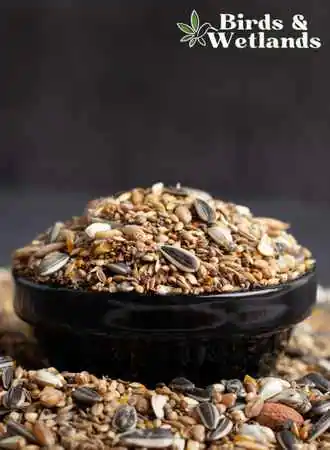
Presence of predators
Setting up a new feeder filled with natural foods such as black sunflower can be a great way to see more birds visit your garden.
However, you may have noticed that garden birds are less likely to visit feeders in areas where predators like hawks are present. This behavior is due to a combination of factors, including the birds’ natural instincts, their ability to perceive danger, and their social behaviors. Birds of prey may be the only birds left in your yard because garden birds such as mourning doves, house sparrow or blue jay all have left.
Birds have evolved to be wary of predators like hawks and other birds of prey. These animals are natural predators of smaller birds and seriously threaten their safety. As a result, birds have developed a variety of defense mechanisms to avoid being caught by predators.
One of these mechanisms is to avoid areas where predators are known to be present. This instinctive behavior helps birds to reduce their risk of being attacked and eaten.
In addition to their natural instincts, birds are also very good at perceiving danger. They have excellent eyesight and can quickly detect potential threats in their environment.
Birds use their keen senses to scan the area around them for predators and other potential dangers. When they detect a threat, they will often flee to safety to avoid being caught.
Birds are social creatures and often rely on other birds for cues on where to find food and how to avoid danger. When one bird senses danger, it will often signal to other birds in the area to alert them to the threat. This type of social behavior is important for the survival of the group, as it helps to reduce the risk of predation and increase the chances of finding food.
If squirrels are scaring your birds away or feasting on your feeders leaving no feeding opportunities for birds, consider getting squirrel proof bird feeders. Alternatively, you can attach squirrel baffles to your birds feeders.
Dirty bird feeders
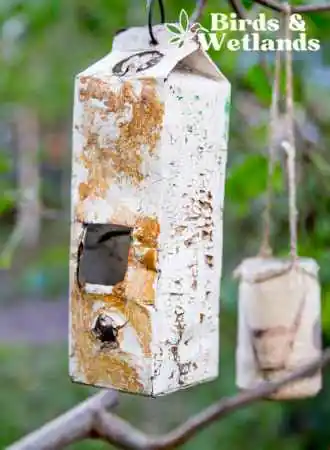
Bird watching is a pleasant experience for many people because it allows them to connect with nature and appreciate the beauty of birds. It also provides a sense of peace and tranquility, as well as an opportunity to learn about different species and their behaviors. However, hearing birds singing in your garden entails responsibility such as regularly cleaning your feeders.
Dirty bird feeders may discourage birds from visiting your garden for a few reasons. First, if the feeders are too dirty, the birdseed may become moldy, which can be harmful to birds. Birds may also be deterred by the presence of other pests, such as ants or mice, that may be attracted to the dirty feeder.
Additionally, most native birds may be more likely to visit clean feeders because they are more visible and easier to access. A dirty feeder may be difficult for birds to access, and they may have to work harder to get the food they need. This can be a turn-off for some birds, who may opt for an easier food source.
Furthermore, a dirty bird feeder may be instrumental in the spread of diseases such as the bird flu.
To encourage birds to visit your garden, it’s important to keep your bird feeders clean and well-maintained. This includes regularly cleaning the feeder and the area around it to remove any debris or spilled seed. You should also make sure to use fresh, high-quality birdseed that is free from mold or other contaminants.
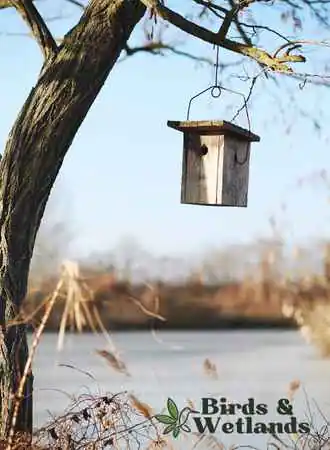
Wrong bird foods
Different birds have different dietary requirements. For example, seed-eating birds such as house finches and house sparrows almost exclusively eat seeds, while hummingbirds prefer nectar. Woodpeckers, on the other hand, feed on insects and suet. Therefore, feeding birds the right food will increase your chances of attracting them to new bird feeder or bird table.
Seeds are a popular type of bird food that is suitable for many bird species and they are used mainly for attracting birds. Black oil sunflower seeds are the most popular choice because they are high in fat and protein, essential for birds’ health. Other seeds that birds love include safflower, nyjer, and millet.
If you are looking to attract woodpeckers, suet feeders are an excellent choice. Suet is made of animal fat and is usually mixed with other ingredients like nuts and seeds to create a high-energy food source. Woodpeckers love suet, and it is also a favorite of nuthatches and chickadees.
Nectar is the way to go if you want to attract hummingbirds to your backyard. Hummingbirds feed on the nectar produced by flowers, and you can create a similar environment in your backyard by setting up hummingbird or nectar feeders.
You can make your nectar by mixing four parts water with one part sugar, but it is important to avoid using honey or artificial sweeteners as they can harm hummingbirds.
However, avoiding certain types of bird food is essential as they can prevent adult birds from visiting your feeders. One such food is bread. While it may seem like a good idea to put out bread for birds, it can harm them. Bread has little nutritional value and can cause health problems in birds, like obesity and malnutrition.
Another food to avoid is peanuts in the shell. While peanuts are a popular bird food, peanuts in the shell can cause choking hazards for smaller birds, like finches and sparrows. It is best to offer shelled peanuts or peanut butter instead.
Better feeding opportunities in the neighborhood
If you’re a bird lover, you’ve probably noticed that birds tend to visit different feeders in the neighborhood for a few weeks before settling on one that they prefer. This is because birds are picky eaters and will choose a feeding spot based on various factors like food quality, feeder design, and safety.
If you’re wondering whether your yard is the preferred destination for birds, you can do a few things to attract them. Firstly, provide a variety of food options, including seeds, suet, and nectar. Different birds prefer different types of food, so offering a range of options will attract a wider variety of species.
Secondly, consider the design of your feeder. Birds are more likely to visit feeders that are easy to access and provide a comfortable perch for feeding. Make sure your feeder is sturdy, easily refillable, and positioned in a spot that is easily visible to birds but away from potential predators.
Finally, create a bird-friendly environment in your yard by providing natural habitats like trees, shrubs, and flowers that provide shelter, nesting sites, and food sources like berries and insects.
You can also put heated bird baths near your feeders to provide all the birds visiting your garden a chance at survival. A bird bath is essential for birds to keep them hydrated and their feathers clean.
To make your yard the most enticing in the neighborhood, try to create a bird-friendly ecosystem by offering food, shelter, and water, and make sure your feeders are easily accessible and attractive to birds such as blue jays.
You may also talk to your neighbors who feed birds in your area, which may help shed some light to your current feeder situation. Keep in mind that it might take over a week or a month to get birds to a new feeder.
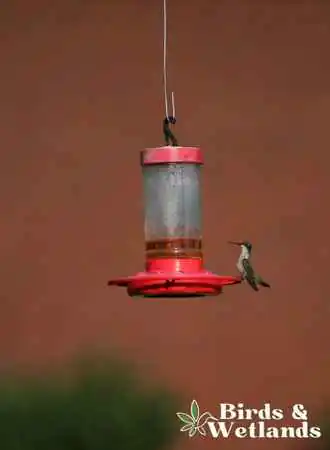
Migration
Migration is a natural phenomenon when most birds travel from one region to another in search of food, breeding grounds, or milder weather conditions. This behavior is seen in quite a few birds, with some traveling thousands of miles each year. During migration, birds follow specific routes that are often determined by the availability of food and suitable habitats along the way.
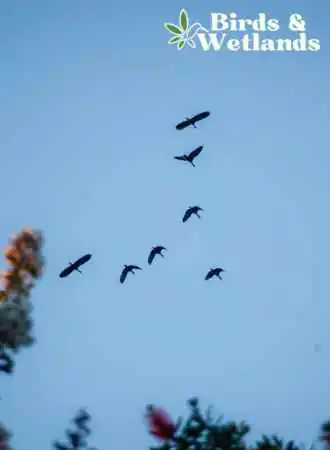
So, could migration be one of the reasons why birds are not coming to your feeders? The short answer is yes. Depending on where you live, the birds you typically see at your feeder may be migratory species that only spend a portion of the year in your area.
As they travel to their wintering grounds or breeding grounds, they may bypass your feeder altogether. This is particularly true for species that rely heavily on natural food sources, such as insects or fruit.
So, what can you do to continue to attract birds to your feeder, even during migration season? Firstly, it’s important to maintain a consistent food supply throughout the year. This will ensure that resident bird populations remain well-fed and comfortable and may also attract migrating birds who are passing through.
Secondly, consider diversifying the types of feed you offer. While thistle seed or black sunflower seeds are a popular choice for many bird species, some migratory birds may be more inclined to gardens with specialty feeders filled with fresh food.
Lastly, don’t forget to consider your table feeder location. Ideally, your own feeder should be placed in a location that is sheltered from strong winds and predators but also visible and accessible to birds.
Changing seasons
If you’re an avid bird feeder, you may have noticed that your feathered friends tend to visit your feeder less frequently in the spring and summer months. You may wonder, where have the birds gone? Disappearing birds can be concerning and disappointing for bird watchers, but there are several reasons why this may happen.
One of the most common reasons why birds stop visiting feeders in the spring and summer is simply because there’s an abundance of natural food sources available.
In the spring or early nesting season, birds have access to all the food they need as the weather warms up. As a result, they may not feel the need to visit your bird feeder as often as they did during the winter months when food was scarce.
Birds may be busy with other activities, such as nesting and raising young birds or baby birds. During this time, birds need to spend a lot of time and energy gathering materials to build nests, incubating eggs, and feeding their chicks. As a result, they may not have as much time to visit your bird feeder as they did in the winter months when they had more free time.
Furthermore, as the weather warms up, birds also tend to disperse and move around more. This means that they may not be in the same location as your feeder anymore.
In addition, some birds are migratory and will leave their wintering grounds in search of breeding grounds further north. As a result, you may notice a change in the types of birds visiting your feeder in the spring and summer.
It’s also possible that birds may be wary of seed feeders during the spring and summer months because of predators. During this time, predators such as hawks and cats may be more active, which can make birds more cautious about visiting feeders. This is especially true if your feeder is located in an open area without much cover.
While many people stop feeding birds in the spring or early summer, you can still put feeders up even if fewer birds are visiting your yard or birds have stopped coming to your feeders altogether.
